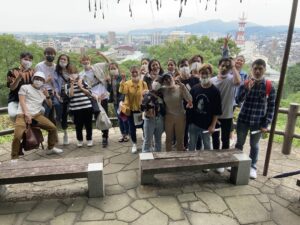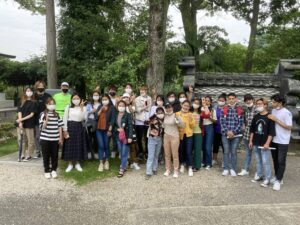多文化コミュニケーション学科
June 26th CSL “saruku” around Isahaya city
- 2021.06.28
- 多文化コミュニケーション学科
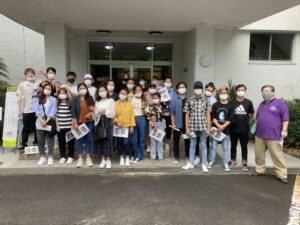
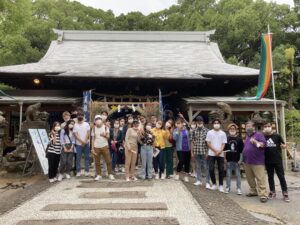
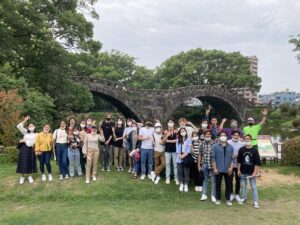
On June 26th, students in the Vファーレン・ワクワク “V-Varen/WakuWaku” and 地域活性化策“Regional Revitalization” Community Service Learning (CSL) program joined together at CGU to take part in a “Saruku” walking tour of Isahaya. This was a good opportunity for students to learn about the rich local history that surrounds the university campus.
Professor Kato from the Department of Economic Policy joined by professor Flake from the Department of Foreign Languages guided students around the city. The walking tour began at the main entrance of the university and followed the old Nagasaki Kaido road that connected the Edo capital to Nagasaki prefecture in early days.
The Nagasaki Kaido road was a 228-kilometer long road traversing Kyushu that played a crucial role in the sugar trade during the Edo Period (1603-1868) and came to be known as the “Sugar Road”. In early days, dignitaries would travel these roads as tributes were paid to Edo. Nagasaki Kaido became an area of commerce as tea shops and inns would dot the route.
Isahaya Park area and the spectacles bridge were a highlight of the walking tour. Students were able to enjoy Azalea Park and viewing the ruins of Takashiro or Isahaya castle which was built during the
Taisho period. The “Spectacles Bridge” or “Megane-bashi” is a double arch stone bridge which spans a pond in Azalea Park. The bridge is twice the size of the famous Spectacles Bridge in Nagasaki city. The bridge, a designated cultural asset, was originally built over the Honmyo river in 1839, but relocated to the park after the flood of 1957. The Isahaya Big Flood which tragically stuck on July 25 in 1957 (Showa 32) 64 years ago, claimed the lives of 682 local residents.
It was a good opportunity to learn more about the history of Isahaya and to connect with the past. Chinzei Gakuin University, also known by the English name Nagasaki Wesleyan University, shares an integral connection with the history of Isahaya. We also give homage to the heritage of our academy.
